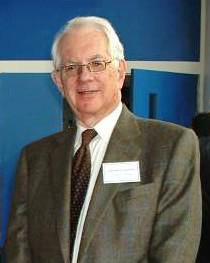
Back شيلدون جلاشو Arabic شيلدون جلاشو ARZ شلدون لی گلاشو AZB Шэлдан Лі Глэшау Byelorussian Шелдън Глашоу Bulgarian শেল্ডন লি গ্ল্যাশো Bengali/Bangla Sheldon Lee Glashow Catalan Sheldon Lee Glashow Czech Sheldon Glashow Danish Sheldon Lee Glashow German
Sheldon Glashow | |
|---|---|
 Glashow at Harvard in 2011 | |
| Born | December 5, 1932 New York City, New York, U.S. |
| Alma mater | Cornell University (AB, 1954) Harvard University (PhD, 1959) |
| Known for | Electroweak theory Georgi–Glashow model GIM mechanism Glashow resonance De Rujula-Georgi-Glashow quark model Chiral color Very special relativity Trinification Weak hypercharge Weak mixing angle Criticism of Superstring theory |
| Spouse |
Joan Shirley Alexander
(m. 1972) |
| Children | 4 |
| Awards | Oskar Klein Memorial Lecture (2017) Richtmyer Memorial Award (1994) Nobel Prize in Physics (1979) J. Robert Oppenheimer Memorial Prize (1977) Sloan Fellowship (1962) |
| Scientific career | |
| Fields | Theoretical Physics |
| Institutions | Boston University Harvard University Texas A&M University California Institute of Technology Stanford University University of California, Berkeley |
| Thesis | The vector meson in elementary particle decays (1958) |
| Doctoral advisor | Julian Schwinger |
Sheldon Lee Glashow (US: /ˈɡlæʃoʊ/,[1][2] UK: /ˈɡlæʃaʊ/;[3] born December 5, 1932) is a Nobel Prize-winning American theoretical physicist. He is the Metcalf Professor of Mathematics and Physics at Boston University and Eugene Higgins Professor of Physics, emeritus, at Harvard University, and is a member of the board of sponsors for the Bulletin of the Atomic Scientists.
- ^ "Glashow". The American Heritage Dictionary of the English Language (5th ed.). HarperCollins. Retrieved 30 July 2019.
- ^ "Glashow". Collins English Dictionary. HarperCollins. Archived from the original on 30 July 2019. Retrieved 30 July 2019.
- ^ "Glashow, Sheldon Lee". Lexico UK English Dictionary. Oxford University Press.[dead link]